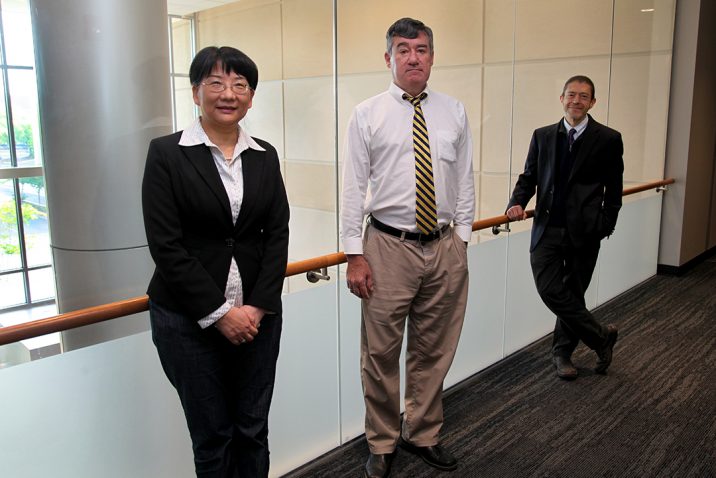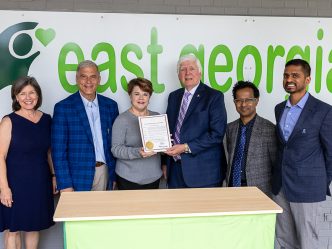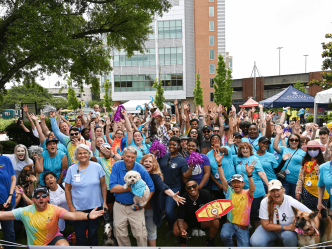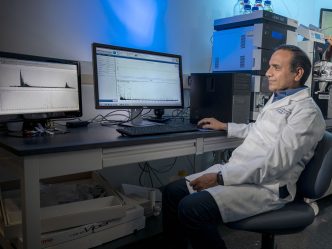Even among a large group of cancer survivors who were mostly insured, college educated and had annual incomes above the national average, up to 10% delayed care in the previous 12 months because they simply could not afford out of pocket expenses like copays and deductibles, investigators report.
Being unable to get time off from work and being “nervous” about seeing a health care provider, were among the other frequently cited reasons for not always getting timely survivorship care, investigators at the Medical College of Georgia and Georgia Cancer Center report in the journal Cancer Medicine.
Investigators analyzed data from 5,426 cancer survivors who volunteered to share their information with the National Institutes of Health’s All of Us Research Program, a historic effort to collect and study health data over many years from at least one million people living in the United States. The cancer survivors were a mean age of 67, mostly female and white with a history of a variety of cancers.
“It is likely that these percentages are much higher among cancer survivors in the general population, and particularly among minorities and other populations suffering significant health disparities in general,” Dr. Steven S. Coughlin, interim chief of the Division of Epidemiology in the MCG Department of Population Health Sciences, and his colleagues report.
Survivorship care may need to continue throughout a patient’s lifetime, and populations at particular risk for being unable to afford the care include racial minorities as well as women, younger individuals and those with lower incomes struggling most to make ends meet.
“There are subgroups of the population who are at higher risk for poor access, for financial hardship and for cancer in the first place,” Coughlin says. “Those are the individuals we are particularly worried about.”
“You can imagine that if you go to these populations that are still grossly under-represented in many of these types of surveys, such as African Americans, Hispanics, and individuals who live in more rural communities, these problems are probably magnified tenfold if not more,” says Dr. Jorge E. Cortes, director of the Georgia Cancer Center and a study coauthor.
“Some people have lifelong commitments because of the investment they had to make to pay for their treatment, so now they are cured but they are in debt, they may have lost their job, there may be strains that developed in their personal and family relationships. Assessment and management of all these aspects of the patient as a whole have been incorporated into this science of survivorship, which is an integral part of cancer care nowadays,” Cortes says.
There were an estimated 16.9 million cancer survivors in the U.S. as of January 2019, a number that is expected to increase to 22.2 million by 2030, according to the National Cancer Institute.
Improved cancer treatment and resulting improved survival rates have oncologists thinking about and talking with their patients about survivorship as early as the time of diagnosis, rather than working reactively, Cortes says, with the goals of preventing or at least minimizing collateral problems on the survivors’ financial and emotional health.
“You cannot prevent the impact that a diagnosis of cancer can have emotionally on somebody,” Cortes says. “We are all humans and it has a big impact, but maybe you can provide the assistance to help the patient navigate the impact that it can have.”
An important aspect of these types of published analyses is to increase awareness of the impact of all these factors, Cortes says. “It is an important component to managing cancer. What this analysis, as well as other assessments that Drs. Coughlin and (Jie) Chen and others have done, is bring that to the forefront.”
One goal of the All of Us program is to ultimately build a database that reflects the country’s diversity, so that good data will be available for groups, like Blacks, women and eventually children, who have historically been underrepresented in medical research.
The uniqueness of this growing national database is that we are able to collect information from people who volunteer to participate, and use data analytics to extract information from the sophisticated database to answer relevant research questions, says coauthor Chen, chief of the MCG Division of Biostatistics and Data Science. More volunteers are needed along with good data science, which enables investigators to extract the insights the data provide, to fully answer questions like those Coughlin and Cortes are asking and to better help patients and families navigate the aftermath of a cancer diagnosis, she says.
Coughlin and his colleagues Cortes and Chen plan to look again at the survivorship data as the 6-year-old database grows and diversifies.
In the current analysis, MCG investigators looked at demographic factors and other personal characteristics like insured and employment status, personal medical history of cancer, health care use and access in the national database. The most common cancers were breast, prostate and colorectal, which are among the top five cancers in the U.S. Patients with skin cancer, the most common cancer, were excluded from their study because their follow up care needs are more often comparatively minor.
About half those studied had an annual income of $75,000 or more while the median household income was $68,703 in 2019, according to the U.S. Census Bureau. About 47% had private health insurance, 41% had Medicare, 6% had Medicaid, and the rest were insured through the military or the Department of Veterans Affairs, other insurers or were uninsured.
12.1% of people in the U.S. under the age of 65 are uninsured, according to the Centers for Disease Control and Prevention, and about 64% have private insurance. Medicare is available for those 65 and older, according to the U.S. Department of Health and Human Services.
At least in the current dataset, minorities were not significantly more likely to report delaying care in the past 12 months, and just a small percentage were uninsured. The investigators note again there was likely an underrepresentation of individuals most at risk for these problems in the database which patients opt to participate in.
Previous studies have shown that uninsured cancer survivors are more likely to avoid care, including prescription medications, actions associated with poorer outcomes, the investigators write. Studies have also shown that Black, Hispanic and other minority cancer survivors were more likely than whites to have no cancer-related medical visit within the past year, and another found survivors who are Hispanic had the lowest insured rates and did not have even routine medical care in the previous year. Younger cancer survivors also are more likely to forgo health care because of cost.
Based on these kinds of previous findings, the MCG investigators also expected to find survivors who are Black or Hispanic would be least likely to receive health care and experience greater barriers to care than whites, they write.
“Health disparities are pervasive, people across the country struggle to make ends meet and to afford their survivorship care,” says Coughlin, who worked for more than a decade at the Division of Cancer Prevention and Control at the Centers for Disease Control and Prevention and has a longstanding interest in better addressing cancer survivorship.
Survivors often have lifelong health care needs that include preventive care, watching for recurrence of the treated cancer or a new malignancy, and cancer treatment related morbidity, which can include problems like infection and bleeding, and the impact of treatment on other body organs like the heart, as well as management of chronic health problems that make them more vulnerable. As examples, 10-20% of breast cancer survivors have diabetes, sometimes because of overlapping risk factors like inactivity and obesity, and some prostate cancer therapies can precipitate diabetes in males, Coughlin says.
Improving survival rates from a variety of cancers, have prompted oncologists to think more about things like the costs of the drugs they are prescribing, and refer patients earlier to a psychologist or psychiatrist, particularly patients already dealing with problems like depression or stress even before their cancer diagnosis. There is also an increasing use of social workers as well as financial advisors to work with families early on, Cortes says.
This more aggressive emphasis on survival reflects the positive reality that more patients are surviving, the investigators say.
Read the study.
 Augusta University
Augusta University





